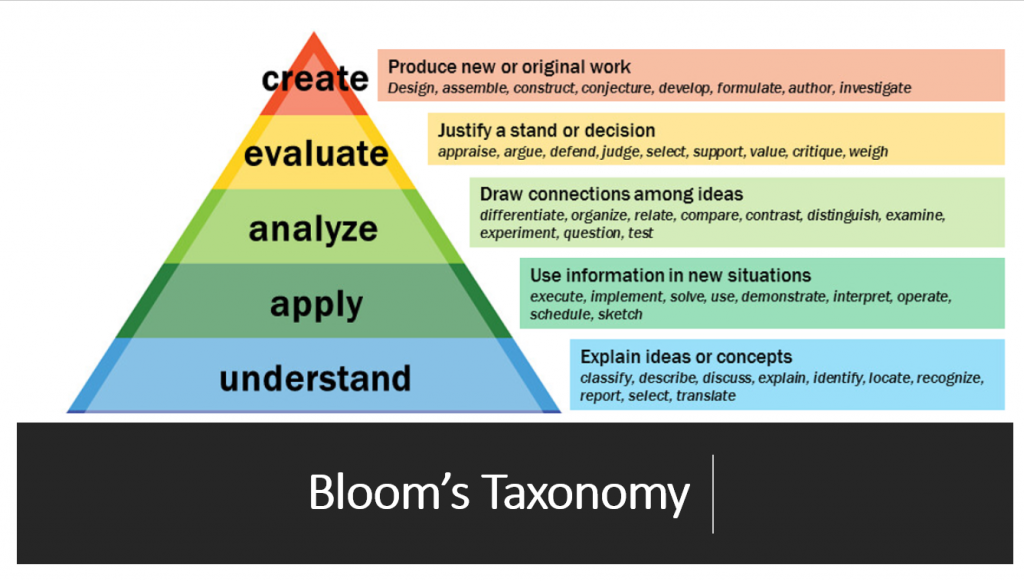Week 2:“Understanding Syllabus Design and Curriculum Development”
Week 2’s topics of “Understanding Syllabus Design and Curriculum Development” are a critical component of becoming a strong Teaching Assistant. The more information students have in their hands regarding course objectives, goals, methods, classroom expectations, assignments and assessment, the more likely it is that they will succeed (O’Brian, Mills & Cohen, 2008).
For Curriculum Development, examining the different steps allows a TA to understand the importance of each one individually, as well as their role within the cumulative cycle. The necessity, efficiency and value should be noted, as well as their incorporation into Bloom’s Taxonomy, and how Curriculum Development addresses each step of learning.

Syllabus Design should be analyzed, addressing both student and teacher needs. With a list provided (above) creative and innovative teachers should be able to create their own, for example, “Clarify the role of the course within the larger major”, “Present a clear Methodology which will be used”, and “Alert students for tools of learning”. If we consider the Syllabus as a contract between the teacher and the student, then we need to be able to balance interest in the course with a firm set of teaching and learning parameters.

Curriculum Development is a continuous process, and something which should be addressed after every class, and adjusted after every semester. Teaching and learning shouldn’t end when the class is over, and the same goes for the development of the curriculum, as it is a living entity which is in constant flux, and therefore, deserves continuous upkeep and adjustments. From "Identification" to "Evaluation" there is no break in a strong curriculum.

Bloom’s Taxonomy sets the order of learning objectives into specifics, from “Remembrance” to “Creating”. Levels of complexity as they apply to learners’ abilities must addressed, with the aim to provide opportunities at each level for students. Reaching the "Create" strata showcases the highest level of understanding, so let's remember to be creative in our teaching approaches!
Each week we will share a brief review of our class, highlighting important aspects that we feel demonstrate the teaching and learning activities which benefit both teachers and students as we work along a path towards sustainable English-language instruction across a variety of disciplines.
